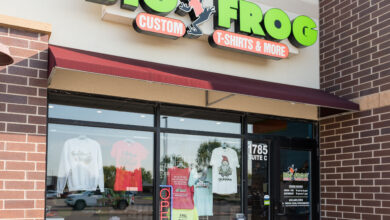The manufacturing model for retail apparel is completely different than the model for our industry. In the retail industry, the apparel designers and manufacturers create samples and show them to their customers, retail stores, often at buying shows. The retail buyers are not buying for what will be in their stores now, or even soon, but in six to 18 months from now. The retail store buyers decide what style, color, and quantities they want and pay for their order. The manufacturer then goes and makes these products in the exact styles, colors, and quantities from all their customers and ships them to the retail locations. Usually at least two seasons will pass from when the order was placed to when the goods begin to arrive in the stores. When a store sells out of something, that is it. There is no warehouse filled with more of that item to restock their shelves.
In the wholesale industry, the manufacturers are working ahead of the orders, instead of on demand. They make the garments and sell them to industry wholesalers who fill their shelves with every style, size, and color they think will be needed over the coming months. And then they wait for independent apparel decoration professionals to place orders for 24 of this, 200 of that and seven of the other-all in various styles, sizes, and colors. Because of the very nature of our industry, the goods that the wholesalers offer have to be “staples,” apparel that is more classic or enduring in style and not extremely trendy things that will be big and then out of style within the next 60 days.
The manufacturers and wholesale distributors are aware of and sensitive to the challenge you face as an independent apparel decoration professional. They have made huge strides in making products available that are more current with today’s styles and looks. There will always be a gap in product availability between those that preorder and those that maintain an on-demand inventory.
—National Network of Embroidery Professionals



